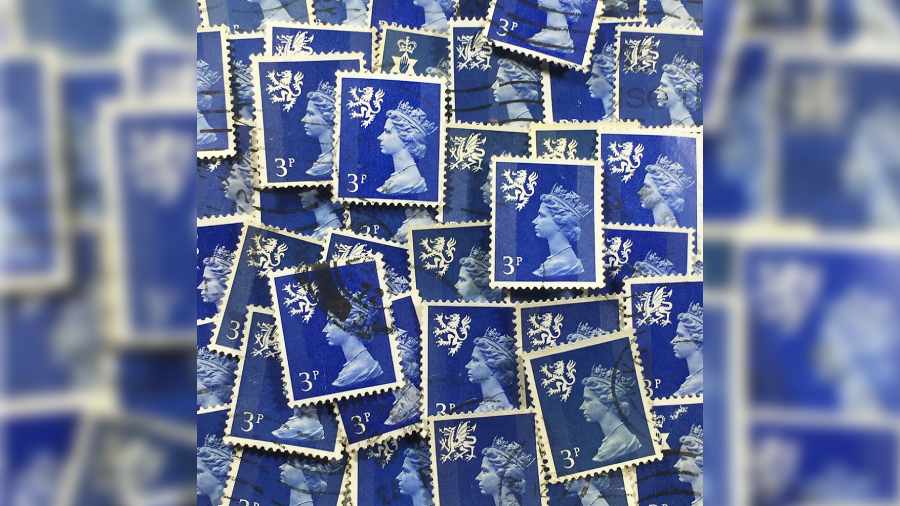There are some childhood passions which, when carried over into adult life, become eccentricities. For me, it was collecting stamps — I am too much of an amateur to confer this interest with the grandiose label, philately. It began in fits and starts in the 1960s, suffered a 20-year gap when, predictably, other interests were paramount, and resumed in the 1990s to relieve spells of boredom. The second phase of collecting was also more focused. I chose two themes. First, there was the challenging project of filling the four Stanley Gibbons albums spanning the reign of George VI from 1936 to 1952. This collection (still ongoing) covered the entire British Empire and the Commonwealth at its zenith, not to mention oddities such as the post-1919 mandate territories and military post offices in far-flung corners of the globe.
Second, and purely because I chanced upon a leaflet in a London post office, I began a collection of British First Day Covers. In effect, barring a few that were issued during the reign of George V, this meant the Elizabethan age. From a modest single volume of a burgundy-coloured First Day cover album issued by the Royal Mail, the collection has grown to a staggering nine volumes of Covers spanning the reign of Britain’s longest-serving monarch.
Never mind the political implications of this eccentricity, the search for the Covers with stamps embossed in a corner with the unmistakable and never-changing head has been an important part of my life. It has taken me to plush showrooms, jumble sales and — my alltime favourite — the Saturday morning stamp vendors fair in the basement of Charing Cross station. All in search of different versions of the Queen’s head.
Last week, as Buckingham Palace announced that the reign had come to an end, I realised that this collection too had drawn to a close. I may still fill in the blanks, discover an interesting postmark or Covers of some Definitives, but the collection that gave me so many years of intense satisfaction is finally reaching its conclusion. I will no longer need the tenth album that I purchased earlier this year.
I t has been a remarkable reign of the lady who — as the French president aptly noted in his tribute — was never Elizabeth II but the ubiquitous Queen. In her 96-year life, she saw it all and experienced the most profound changes ever in the annals of her country.
Just look at it from the vantage point of postage stamps. When he died a premature death in 1952, George V’s head graced not only the stamps of the Old Dominions — Canada, Australia and New Zealand — but it also covered now-forgotten territories such as Aden, Basutoland, Southern and Northern Rhodesia, the Ascension Island, British Guyana and, of course, Zanzibar. India, Ceylon and Ireland had departed and South Africa was in a twilight zone after 1948, but the red coloured British Empire — the largest empire in history — was still a living reality. By the time she departed, there were doubts whether Scotland would remain a part of the United Kingdom.
The territorial truncation was, however, accompanied by a significant enlargement of Blighty. During the high noon of Empire, Great Britain was principally a white country with regional variations. As decolonisation took shape, the Mother Country, or the mythical ‘Home’, became the favoured destination of large numbers of migrants from the Indian subcontinent, the West Indies, different parts of Africa and, of course, Ireland. In 1975, when I first went to Britain, most of England — apart from London — was White; now, there are times you feel that English is the third language in parts of the Kingdom. Until the mid-1980s, there wasn’t a Black or Asian face in the House of Commons (although three Parsee gentlemen won elections before 1945). Today, under two consecutive Conservative prime ministers, the posts of home secretary and chancellor of the exchequer have been given to non-Whites. Those who view Britain as unchanging and hidebound (merely because the bus route numbers in London maintain a remarkable continuity) seriously miss out on the revolutionary changes that have transformed the Sceptred Isle. The positive aspect is the sense of inclusion; its negative feature is the creeping overdose of Woke attitudes.
Even the way English is spoken has changed dramatically. When the Queen committed herself to the lifelong pursuit of her duties in 1952, she spoke an English with an accent that we would call plummy and which, in subsequent years, would come to be known, after some nasal dilution, as the Received Pronunciation, so favoured by the BBC. Indeed, how the monarch spoke would often set the standards of ‘proper’ English. Now — again if the BBC is any guide — regional accents are being celebrated and what is called the Estuary accent — after the Thames Estuary — is becoming the mean. It is impossible to anticipate what further changes the reign of Charles III will bring.
A mid this social turbulence, the Queen became the foremost symbol of continuity and reassurance, the bridge between those held on to an England that is, alas, on its way out and those more impatient for a more cosmopolitan identity. Those who loved the England of jam and scones, of long shadows and red pillar boxes, saw in the Queen the foremost ambassador of continuity. She was also the biggest tourist attraction and the propellor of Britain’s status as the world’s Number Two soft power State after the United States of America. At the same time, her image as the concerned grandmother, always ready to do the right thing and never be drawn into controversy, kept her on the radar of those for whom irreverence was a natural state of being. What is even more interesting is that the new immigrants — the products of a controversial Empire — are among Britain’s most committed Royalists, a phenomenon that calls into question some of the more disparaging interpretations of the imperial past. By being proper, correct and fanatically maintaining her sense of duty, the Queen didn’t merely enhance her own image, she enhanced the status of the monarchy. She was a remarkable lady.
I am glad I collected her stamps.










